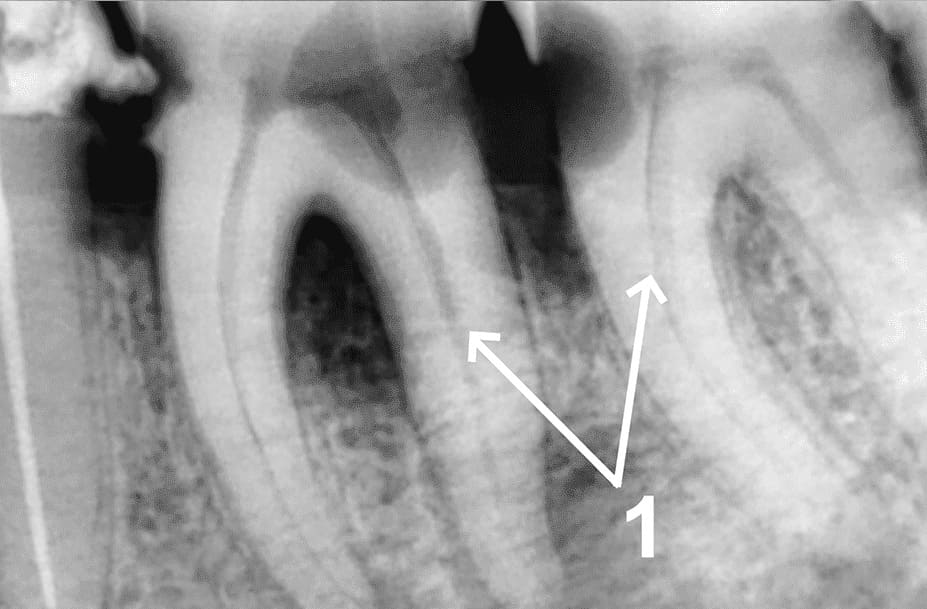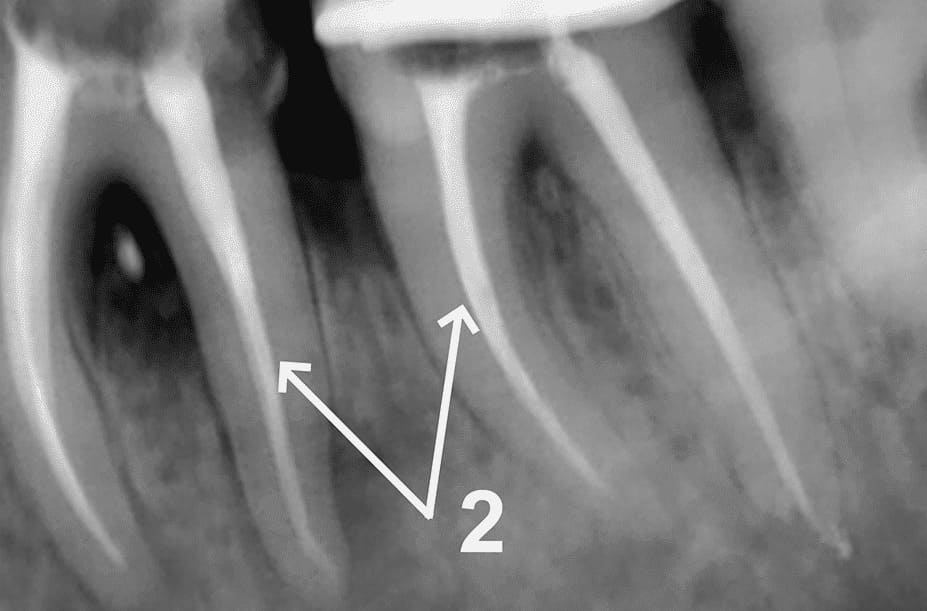Root canal treatment (endodontics)
WHAT IS ENDODONTIC TREATMENT?
DENTAL TREATMENT WITH MICROSCOPE
A dental microscope presents the ability to see inside the canal and not to work by touch. Some time ago, this might have seemed redundant, like HD resolution at some point, but the choice is obvious. In addition to the intuitive benefits, one of the reasons a microscope is necessary is that, before its widespread use, not all channels could be detected. For example, it was considered that there are most often 3 canals in the upper molars, but, as it turned out later, there are often 4 of them. This fourth canal is simply complicated to detect and process without visual control.
Using a dental microscope and other instruments, a doctor can:
- see the state of the canals in full length;
- find additional root canals;
- find difficult areas;
- remove the remains of broken instruments that block the lumen of the canal, negatively affecting the treatment;
- remove old fillings;
- carry out canal processing and cleaning;
- find and seal perforations in root canals;
- detect cracks.
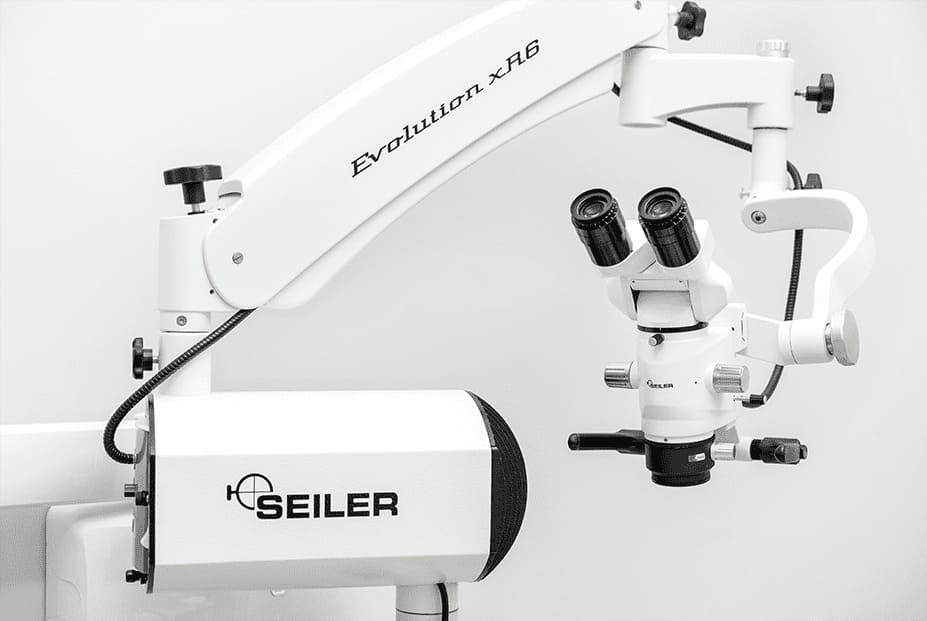
WHEN ROOT CANAL TREATMENT IS NEEDED
Depending on the type of inflammatory process in a tooth, it may be accompanied by both severe pain syndrome and be mild or entirely insensible for several years. Sometimes an abscess develops; a fistula can appear and disappear.
Sometimes, an X-ray can help detect a trace of bone inflammation, indicating a granuloma or cyst. All these and several other signs can be identified and differentiated only by a doctor in a specially equipped office.
- frequent aching pain, which intensifies at night or under the influence of any irritants, can radiate to the ear or temple – often damage to the canal is accompanied by only minor discomfort;
- increased sensitivity of teeth when exposed to cold and hot;
- sometimes, there is a slight temperature rise;
- bad breath;
- swelling and redness of the gums and cheeks.
THE IMPORTANCE OF TIMELY ENDODONTIC TREATMENT
Timely treatment of canal infections can significantly improve the prognosis since a neglected or complicated process, even if imperceptible, leads to the loss of the tissues of the tooth itself and the bone.
And this not only complicates the restoration (if the conservative approach can be applied) but can complicate the preparation for implantation if it is impossible to save the tooth.
The main indications for root canal treatment are pulpitis and periodontitis.
Signs of pulpitis are:
1.Hypersensitivity when eating hot and cold food.
2.Insomnia, caused by painful sensations.
3.Increased body temperature, fever and malaise.
4.Loss of appetite.
Similar symptoms are characteristic of periodontitis. However, sometimes these diseases don’t have obvious symptoms. In this case, the doctor detects them during diagnostic procedures.
People often prefer to postpone a visit to the dentist if the pain does not bother them much. But such a decision can result in various complications. The consequences of an unfilled canal are an acute inflammatory process with pain syndrome, apical abscess, and periostitis.
The procedure for root canal refilling is necessary if pain persists or appears after filling, signs of inflammation are visible on the x-ray, and the tooth canal is not completely closed.

Root canals system
Canals are cavities within the root. The root is part of the bony formation of the tooth. It enables lymph circulation. The hole at the highest point supplies the tooth with valuable substances and ensures high-quality blood circulation. The following signs can be a sign of root inflammation:
- increase in body temperature;
- face puffiness and swelling;
- gums swelling;
- general weakness.
There are two forms of nerve inflammation: chronic and acute. The first one happens when pressed. The danger of the disease in this form is the formation of cysts and granulomas. If you do not contact the dentist in time, the adjacent tissues can get infected.
The acute form develops rapidly. The patient complains of severe pain. The degree of inflammation is determined using x-rays. Visually, the dentist can identify the nature of the disease by the presence or absence of abscess signs.
The number of dental canals ranges from one to five. One is considered the norm for incisors, and posterior teeth, from five to six.
The process of cleaning and filling also depends on the length of the canals. It is from one to two centimetres. Exact indicators are determined using computed tomography or apex locator.
METHODIC OF ROOT CANAL TREATMENT
Endodontic treatment’s ultimate goal is obturation, filling of the cleaned root canals, the communication between them, and accessory canals with a sealing material. We do not use any toxic and hormone-containing filling materials, as we are interested in the tooth’s long-term rehabilitation, not in “healing.” For spacial obturation, an inert AH Plus sealer and warm gutta-percha are used, which in the liquid phase fills all anatomical sections of the root canals, which gives maximum tightness, meaning a better prognosis.
When granulomas or cysts are present, multiple “medication replacement” in the tooth is no longer required for the treatment. In most cases, filing of the tooth canals is performed during the first, less often the second visit.Root Canal Cleaning
In the treatment process, the nerves are removed. This type of procedure is almost impossible without the use of anaesthesia. Also, a dental X-ray or 3D tomography should be performed for accurate diagnosis. Canal cleaning takes one to two hours. Approximately the same amount of time is required for preparatory procedures.
Root canal treatment is a simple and practical way to save a tooth. Often this is the only way to save a tooth from extraction and, at the same time, prevent the spread of infections and bacteria from the inflamed tooth into the body.
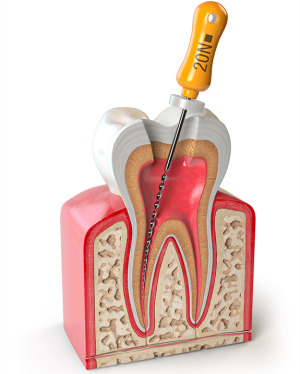
IS ROOT CANAL TREATMENT PAINFUL?
After root canal treatment or under a temporary filling, the tooth may hurt, which is normal.The reasons:
- tissues are injured in the treatment process;
- periodontal reaction to drugs;
- acute inflammatory process due to the interaction of drugs and microbes;
- pain may occur at the injection site.
Usually, the discomfort disappears after a few days, the doctor will prescribe the necessary painkillers. If a tooth bothers you for more than a week, you should definitely consult a doctor. Do not endure pain or treat it using folk remedies.
Sometimes, after treatment, swelling of the gums or cheeks can appear. In such cases, you need an unscheduled visit to a doctor. The dentist will prescribe medication or re-treat the canals of the tooth.
After endodontic treatment, it is necessary to place a ceramic crown or inlay since pulpit teeth are most often severely destroyed by caries.
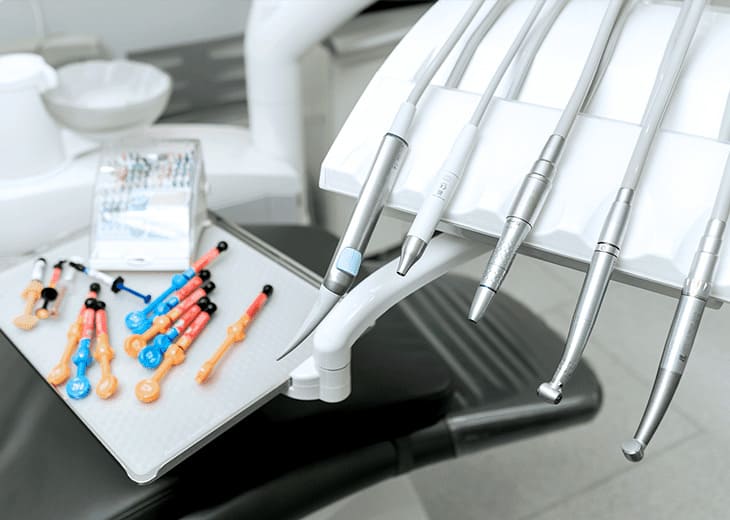
Сost of treatment
ENDODONTIC SURGERY
In several cases of dental periodontitis secondary treatment, when microorganisms have accumulated in inaccessible root tissues, this area’s process can be defined as irreversible.
In this situation, endodontic surgery applying root apex resection through a special access, contributing to fast bone tissue regeneration.

